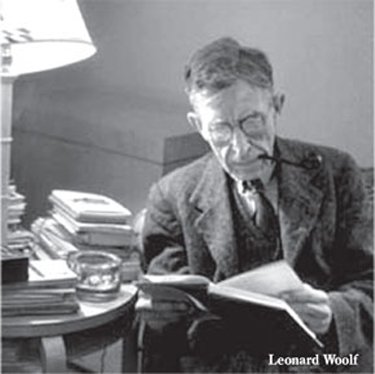Lev Grossman: On Modernism & Modern Fantasy
J.R.R. Tolkien, Leonard Woolf, Lev Grossman, Modern Fantasy, Modernism
In his 2010 essay, “The Death of a Civil Servant,” fantasy novelist Lev Grossman finds the collision between Modernism and the Revulsion Against Modernism Expressed as Fantasy exemplified in the 1905 colonial experiences of Bloomsbury’s Leonard Woolf.
All Englishmen who were in their twenties in 1905 had at least one thing in common: They’d watched the world of their childhoods die. Just as they were coming of age, electricity replaced gaslight. Cars and buses replaced horses and bicycles. Urban populations were exploding, mass media and advertising were yammering, and mechanized warfare crouched in the wings, ready and waiting. The early twentieth century looked and sounded and smelled nothing like the late nineteenth. “In those days of the eighties and nineties of the nineteenth century the rhythm of London traffic which one listened to as one fell asleep in one’s nursery was the rhythm of horses’ hooves clopclopping down London streets in broughams, hansom cabs, and four-wheelers,†Woolf would write, toward the end of his life, in the unimaginable year of 1960. “And the rhythm, the tempo got into one’s blood and one’s brain, so that in a sense I have never become entirely reconciled in London to the rhythm and tempo of the whizzing and rushing cars.†Woolf felt displaced, like the hero of H. G. Wells’s The Time Machine, exiled in the future. So did everybody else—Evelyn Waugh once remarked that if he ever got ahold of a time machine, he’d put it in reverse and go backward, into the past.
It’s no accident that both modernism and modern fantasy made their entrances at that moment, in that same displaced generation. It’s rarely remarked upon, but just as Virginia Woolf and Joyce and Hemingway were inventing the modernist novel, Hope Mirrlees and Lord Dunsany and Eric Rücker Eddison were writing the first modern fantasy novels, at least in the form most fans are familiar with. This happened for a reason. Modernism and fantasy were two very different responses to the same disaster: the arrival of the modern era and the death of Woolf’s beloved nursery-world. Though like siblings—or roommates—who are mortally embarrassed by each other, they’re not in the habit of acknowledging the connection. …
But fantasy and modernism aren’t just opposites, they’re mirror images of each other. When the social, cultural, and technological catastrophe that inaugurated the twentieth century took place, leaving the neat, coherent Victorian universe a desecrated ruin, all that was left for writers to do was to sift disconsolately through the rubble and dream of the organic, vital world that had once been. Modernism was pieced together out of the jagged shards of that shattered world—it’s a literature made of fragments, the better to resemble the carnage it represented. Whereas fantasy was a vision of that lost, longed-for world itself, a dream of a medieval England that never was: green, whole, prelapsarian, magical.
Here and there you can spot their shared heritage, the places where modernism and fantasy touch. Modernists and fantasists both rework myths and legends: you can watch King Arthur and his knights trot, obscured but still visible, through Eliot’s “The Waste Land,†Virginia Woolf’s The Waves (in the person of the knightly Percival), and Joyce’s Finnegans Wake (“Arser of the Rum Tippleâ€) to emerge into the sunlit meadows of T. H. White’s The Once and Future King. Modernism and fantasy are set against the same landscapes: verdant preindustrial hills and dark, broken ruins. La tour abolie of “The Waste Land†is the architectural double of Orthanc, the tower of Saruman the White in The Lord of the Rings. The green fields of Narnia abut the “fresh green breast of the new world†that Fitzgerald invokes at the end of The Great Gatsby.
But by the time we reach them, those green fields are always in decline. The spell never lasts. King Arthur is always dying, and the Elves are always shuffling off toward Valinor, where mortals cannot follow. Narnia falls into chaos, then drowns and freezes, and the survivors retreat into Aslan’s Land. We think of fantasy and modernism as worlds apart, but somehow they always end up in the same place. They are perfectly symmetrical. Fantasy is a prelude to the apocalypse. Modernism is the epilogue.
Read the whole thing.
Via Ratak Monodosico.




